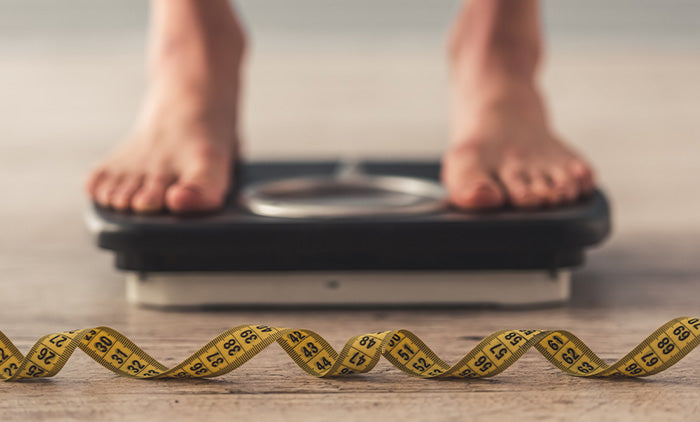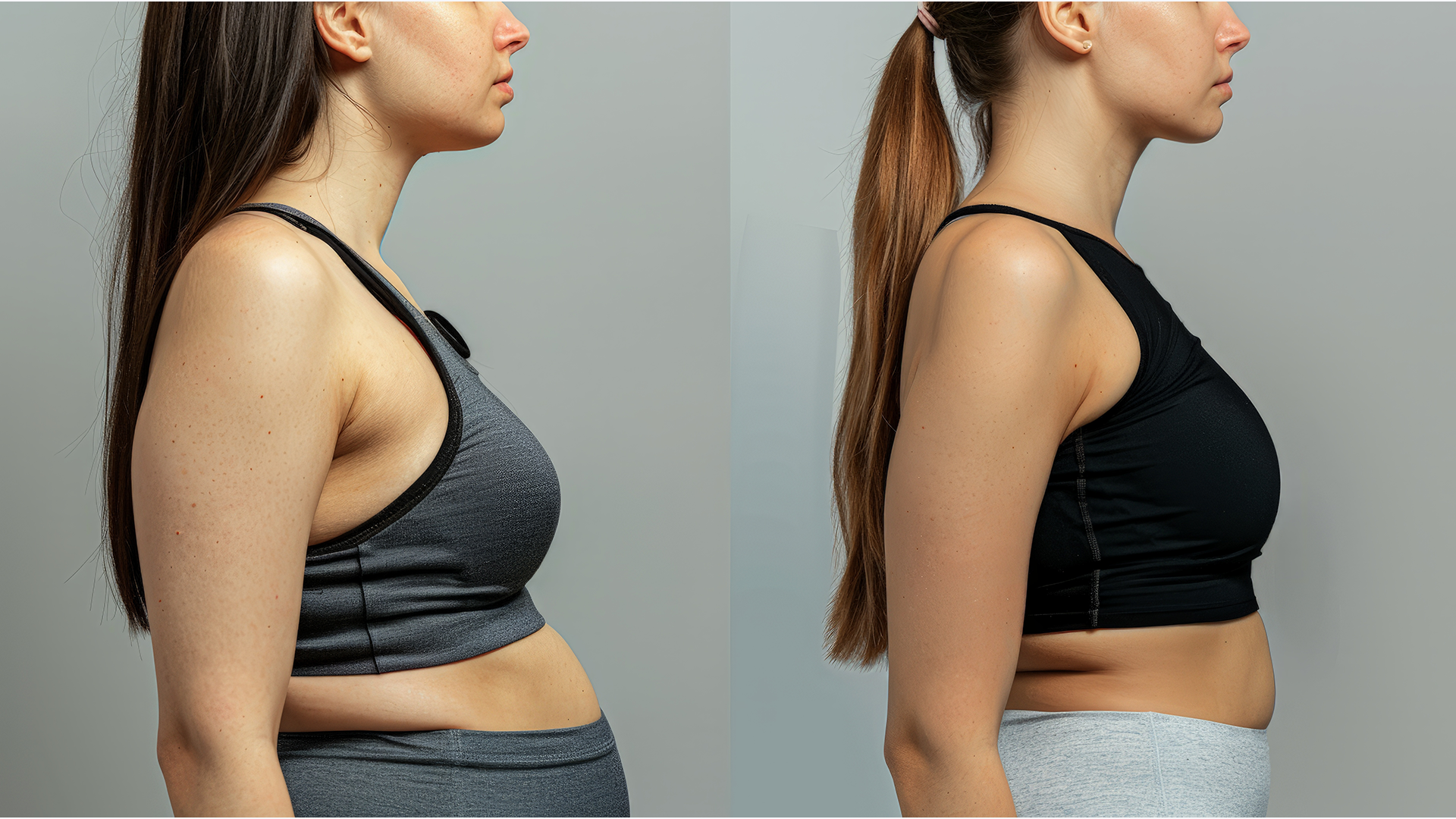What you’ll learn in this blog… |
Body Mass Index (BMI) will inevitably crop up whenever you read about weight loss or hear about it on TV or radio. It’s hard to escape it!
BMI has become one of the most popular methods of indicating whether an individual is overweight or obese health professionals.
In fact, you’ve probably been told that your BMI is high by a health professional at some point in your life (spoiler alert: it doesn’t mean you are overweight).
But what does BMI mean, and how is it measured?
You might think it is relatively rich of us, a weight loss brand, to talk about the inadequacies of BMI. But the truth is that being told to lose weight isn’t conducive to long-term weight loss. Also, being prescribed weight loss based on a flawed system can be emotionally and physically damaging.
Ultimately any weight loss journey should have your needs at the center. You should decide to do it for reasons that are important to you - not because you are told to.
So, in this blog, we’re looking at what BMI is and whether it’s an accurate way of measuring the health of your body in 2022.
What is BMI?
|
Body Mass Index (BMI) is the “standard” measurement used by health professionals to determine whether you are overweight, obese or within a healthy weight range. |
Doctors use body mass index to determine whether someone carries excess weight and should be looking to lose weight. And, let’s face it, it’s a quick and convenient way to stick you into a “category.”
But exactly how accurate is it, and are there better ways to gauge whether or not we should be exercising more and watching what we eat?
We first need to have a little history lesson to understand how precise the body mass index is.
The BMI measurement was created in the 19th century by the Belgian mathematician and statistician Lambert Adolphe Quetelet. He created the BMI formula to quickly determine the degree of obesity in the general population for the government. It was not developed to measure obesity in individuals but was a population-wide initiative.
It evolved slightly during the 1940s when the Metropolitan Life Insurance Company introduced it to gauge how relative a person’s height and weight were at the time of death as it indicated health problems. They used BMI to determine what to charge clients for insurance based on their weight and overall health.
Since the 1940s, BMI hasn’t evolved much.
Although in the early 2000s, BMI was all the rage within the pages of every style magazine. Celebrities were deemed to have a high BMI, even when they looked the “picture of health.”
This picture, somewhat worryingly, led to people thinking they were overweight when they were perfectly healthy. It may have led to the “size zero” trend, causing individuals to be dangerously underweight.
Essentially for over 80 years, we’ve been tied to an outdated system of weight measurement that wasn’t fit for purpose in the first place.
Related content: Is being overweight or obese bad for my health?
How to calculate your Body Mass Index (BMI)
The BMI ranges fall into different categories, which are:
- Underweight
- Healthy
- Overweight
- Obese
It’s essential to consider your BMI, but it’s important to remember that it should be used as one tool that helps you understand your overall health and wellness.
Your Body Mass Index is calculated using height and weight. It’s your weight in pounds divided by your height in feet squared.
You can check your BMI here using the adult BMI calculator - if you can’t be bothered doing the math yourself (understandable).
BMI applies to most adults 18-65 years, and the following BMI corresponds to the following categories:
|
BMI Weight Status Below 18.5 = Underweight 18.5—24.9 = Healthy/Normal Weight 25.0—29.9 = Overweight 30.0 and Above Obesity |
While BMI is widely used, it’s becoming more apparent that it’s not an accurate indicator of being overweight or general health. It does not consider other factors impacting overall health, such as muscle mass, bone density, body composition, and racial and sex differences.
So, if you’ve been anxious after hearing that your BMI is a bit high, don’t be overly concerned at this stage.
There are other factors to consider, and perhaps, we should be paying more attention to our bodies and less to BMI. It’s certainly not “One size fits all.”
It tends to be accurate at identifying people who are massively over or underweight, but for the people in the middle, it’s not fit for purpose.
Why is the Body Mass Index (BMI) inaccurate?
There’s no denying that BMI can be a helpful tool in gauging whether or not we need to make a lifestyle change concerning our weight - especially if we are at one of the extreme ends of the scale.
But how accurate is it, and why and should it only be used as a guide?
Studies from the Centers for Disease Control and Prevention repeatedly find the lowest mortality rates among people whose body mass index puts them in the “overweight” and “mildly obese” categories.

And recent research suggests that losing weight doesn’t improve health biomarkers such as blood pressure, fasting glucose, or triglyceride levels for most people.
So, a growing body of research suggests that BMI as a way to measure excess fat and overall health may not be accurate.
1. Body Mass Index (BMI) doesn’t consider different demographics…
The original calculations for BMI involved data from the European population only (remember, it was initially developed in Belgium). And more recent research has discovered that demographics and race play an essential role in health and overall weight distribution.
In 2004, the World Health Organization studied 15,000 Chinese adults and found that those at risk from cardiovascular disease had a much lower BMI and waist measurement than Caucasians. What is considered a normal BMI, in a low-risk category for other races, can lead to higher risk in Chinese individuals.
Plus, in 2020, it was discovered that the BMI considered healthy for Black women is higher compared to caucasian and Hispanic women. Caucasian women have a higher risk for diabetes with a BMI of 29, whereas this doesn’t impact Black women til a BMI of 33.
This indicates that a BMI measurement that might not be healthy for one person could be healthy for another- and vice versa. And especially points to the fact that more research is required to figure out what healthy means for different ethnicities.
2. Body Mass Index (BMI) doesn’t consider body composition…
The simple fact is that body weight does not equate to having excess fat. For example, two women at 5ft 4inches, weighing 175lbs, would be obese with a BMI of 30.
One of these women struggles with her weight and carries excess fat. The other is a weight lifter who certainly isn’t obese. Indicating that the BMI category does not always reflect their actual body composition and fat distribution.
Calculating your body fat percentage is a better measure of your weight status.
|
Your body fat percentage is your fat tissue compared to your total body mass |
Your body fat can be measured in a couple of different ways, including
- Skinfold calipers
- Bioelectrical impedance Analysis
- DXA X-ray Scan
Skinfold calipers are one of the easiest ways to assess skinfold thickness. It measures the thickness of the skin/fat at specific points of your body. The problem with this is that the assessment is based on the idea that body fat is equally distributed over the body, which is not often the case (more on that later).
Bioelectrical impedance Analysis (BIA|) scale measures body composition based on the rate at which an electrical current travels through the body. Body fat causes greater resistance, so it helps you estimate your total body fat.
One of the most accurate measurements appears to be from a DXA X-ray Scan. This method is commonly used to evaluate bone mineral density but can also accurately assess fat content and body composition. It breaks down your weight into fat, bone and lean tissue and appears to be one of the most reliable methods of determining fat content.
BMI doesn’t measure muscle vs. fat, which means that people might be assumed overweight that are not.
3. BMI doesn’t consider the location of fat…
Finally, fat distribution is important when considering overall health, yet BMI doesn’t consider this.
Health issues are often caused by upper body fat rather than lower body fat. This is because of the organs it surrounds, such as the heart, liver and pancreas.

This effectively means that people with the same BMI could have very different risk factors for heart attacks or strokes. It very much depends on where the fat is located in their body.
Therefore, fat around our vital organs will cause a much more considerable risk of health issues.
BMI doesn’t consider this at all - and offers a blanket categorization based on height and weight rather than specific risk factors.
If BMI isn’t accurate, how can I tell if I’m healthy?
So how do we define “healthy”?
Most tend to define health as good physical or mental health. We would suggest that it’s BOTH.
Being in good health means we can enjoy life better and live a longer, more active and productive life.
There are a couple of indicators that you can use to improve your health, but that does not include calculating your BMI.
1. Get your cholesterol level checked…
|
Cholesterol is a fatty substance found in your blood and is necessary as every cell in our body requires it. It’s produced naturally in the liver and can come from our food. |
However, high cholesterol levels can increase your risk factors for health conditions such as heart attacks, strokes and vascular dementia.
There are two different types of cholesterol; High-density lipoproteins (HDL) and Non-high-density lipoproteins (non-HDL or LDL).
High-density lipoproteins (HDL) are also known as ‘good’ cholesterol. This is because it removes the bad type of cholesterol from your blood and takes it back to the liver to be broken down.
Non-high-density lipoproteins (non-HDL or LDL) are also called 'bad' cholesterol. Too much of it builds up inside blood vessels, clogs them and can lead to cardiovascular disorders.
Checking your cholesterol and reducing it if necessary is a great way to improve your overall health outcomes in a way that is not linked to weight.
2. Check your blood pressure and blood sugar levels…
Blood pressure is known as the silent killer…
Why?
Because there are very few symptoms of elevated blood pressure, the consequences can be dire, with increased risks for heart disease, strokes and heart failure.
Blood pressure is something that your health professional can check. However, you can also buy home blood pressure monitors to keep an eye on your levels.
If it is high, your doctor can advise you on making the appropriate changes to get it back on course.
3. Check your blood sugar levels…
We all need sugar to provide our cells with energy; if you're like most of the population, you probably enjoy it.
However, over a long period, increased blood sugar levels can increase your risk of Type 2 diabetes and other illnesses such as coronary heart disease, kidney disease and diabetic eye disease.
So, it’s essential to monitor your blood sugar, and if necessary take steps to reduce it.
4. Check your waist circumference
Your waist measurement is a good indication of fat around your middle, and a higher level of that fat can increase your risk of high blood pressure and diabetes
Remember, where you hold your body fat is often more important than how much you have. Storing fat in your upper half is more likely to cause health problems due to the organs you have, i.e., heart, lungs, and liver.
If your waist circumference is 35 inches and over for a woman or 40 inches and over for a man, you might have an increased risk of specific health problems.
Again, it needs to be noted that ethnicity will factor into this measurement, as certain groups will naturally have a different distribution of fat.
5. Check your weight…
I don’t want to sound old-fashioned, but where are the good old bathroom scales when you need them?
There is strong evidence that weighing yourself daily is a great way to keep up to date with your weight and improve weight loss outcomes (if that is your goal).

Rather than panic at how high the marker is on the scales, use them to regularly monitor your weight to ensure you are at least carrying the same weight and regularly piling on the pounds.
This, alongside the other health measures, will allow you to accurately measure whether you are healthy.
Related content: Is being overweight or obese bad for my health?
6. Go with how you feel…
Perhaps the most crucial question of all…
“how do you feel about your body?”
While all these measurements and testing are going on, has anyone asked how you feel about your body?
Is your weight restricting you in any way?
Are you confident in your own body?
How do your clothes feel?
Perhaps these are the most important questions to debate, rather than the accuracy of an inaccurate means of measuring body fat. Ultimately, the most crucial measurements are how you feel in your own life and body.
So what do we know about BMI?
BMI is one of the most common ways health professionals check you for health issues, but it’s not the only way and certainly not the most accurate way.
BMI is a convenient and quick way to categorize us based on body weight. However, using it as a blanket way to determine health can be inaccurate and, more importantly, damaging to individuals (both mentally and physically).
Demographics, weight distribution, and body fat percentage are not considered; therefore, BMI should only be used as a guide. Essential factors like blood pressure and cholesterol levels better guide and indicate health risks and overall health.
Most concerning is that a BMI check that states you are “healthy” will miss other important factors and issues, such as high blood pressure and cardio issues. Simply put, weighing less doesn’t equate to health.
On the other hand, a BMI, which states we are overweight or obese, could also miss the fact that we are otherwise in excellent physical condition.
Perhaps the most important lesson we can learn from this is that being overweight doesn’t always mean being unhealthy - and that a more holistic approach to health is required.
If BMI isn’t the motivation you need, here are five ways to keep your motivation burning during your weight loss journey.




